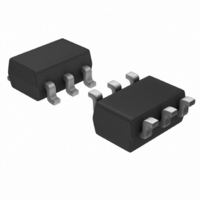LT1616ES6#TR Linear Technology, LT1616ES6#TR Datasheet - Page 6

LT1616ES6#TR
Manufacturer Part Number
LT1616ES6#TR
Description
IC REG SW 1.4MHZ STEPDWN SOT23-6
Manufacturer
Linear Technology
Type
Step-Down (Buck)r
Datasheet
1.LT1616ES6TRMPBF.pdf
(16 pages)
Specifications of LT1616ES6#TR
Internal Switch(s)
Yes
Synchronous Rectifier
No
Number Of Outputs
1
Voltage - Output
3.3V, 5V
Current - Output
600mA
Frequency - Switching
1.4MHz
Voltage - Input
3.6 ~ 25 V
Operating Temperature
-40°C ~ 85°C
Mounting Type
Surface Mount
Package / Case
SOT-23-6
Lead Free Status / RoHS Status
Contains lead / RoHS non-compliant
Power - Output
-
Available stocks
Company
Part Number
Manufacturer
Quantity
Price
APPLICATIO S I FOR ATIO
LT1616
The LT1616 efficiently converts power from an input volt-
age source to a lower output voltage using an inductor for
energy storage. The LT1616 uses its internal power switch
and an external catch diode (D1 of the application circuit
on the first page of this data sheet) to produce a pulse-
width modulated square wave. Inductor L1 and output
capacitor C2 filter this square wave to produce a DC output
voltage. An error amplifier regulates the output by com-
paring the output (divided by the feedback resistor string
R1 and R2) to an internal reference. The LT1616 uses
current mode control; instead of directly modulating the
pulse width, the error amplifier controls the peak current
in the switch and inductor. Current mode control has sev-
eral advantages, including simplified loop compensation
and cycle-by-cycle current limiting.
Figure 1 shows several waveforms of the application cir-
cuit on the front page of this data sheet. The circuit is
converting a 12V input to 3.3V at 300mA. The first trace is
the voltage at the SW pin. When the internal switch is on,
the SW pin voltage is near the 12V input. This applies a
voltage across inductor L1, and the current in the switch
6
0.2A/DIV
0.2A/DIV
5mV/DIV
5V/DIV
V
V
I
OUT
SW
SW
I
L1
Figure 1. Operating Waveforms of the LT1616
Converting 12V to 3.3V at 300mA
U
200ns/DIV
200ns/DIV
U
W
1616 F01a
1616 F01b
U
(second trace) and the inductor (third trace) increases.
When the switch turns off, the switch current immediately
drops to zero and the inductor current flows through the
catch diode D1, which clamps the switch node 0.4V below
ground. The voltage across the inductor in this state has
the opposite sense and is equal to the output voltage plus
the catch diode drop, so the inductor current begins to
decrease. The fourth trace shows the output voltage ripple.
At light loads, the inductor current may reach zero on each
pulse. The diode will turn off, and the switch voltage will
ring, as shown in Figure 2. This is discontinuous mode op-
eration, and is normal behavior for the switching regula-
tor. The LT1616 will also skip pulses when the load is light.
If the output is shorted to ground, the output voltage will
collapse and there will be very little voltage to reset the
current in the inductor. The LT1616 can sense this condi-
tion at its FB pin. In order to control the current, the LT1616
reduces its operating frequency, allowing more time for
the catch diode to reset the inductor current.
The input and output voltages determine the duty cycle of
the switch. The inductor value combined with these volt-
ages determines the ripple current in the inductor. Along
with the switch current limit, the inductor ripple current
determines the maximum load current that the circuit can
supply. At minimum, the input and output capacitors are
required for stable operation. Specific values are chosen
based on allowable ripple and desired transient perfor-
mance. The rest of the applications information is mainly
concerned with choosing these and the other components
in an LT1616 application.
0.2A/DIV
5V/DIV
V
SW
I
L1
V
V
I
Figure 2. Discontinuous Mode Operation
OUT
IN
OUT
= 12V
= 18mA
= 5V
500ns/DIV
1616 F02













